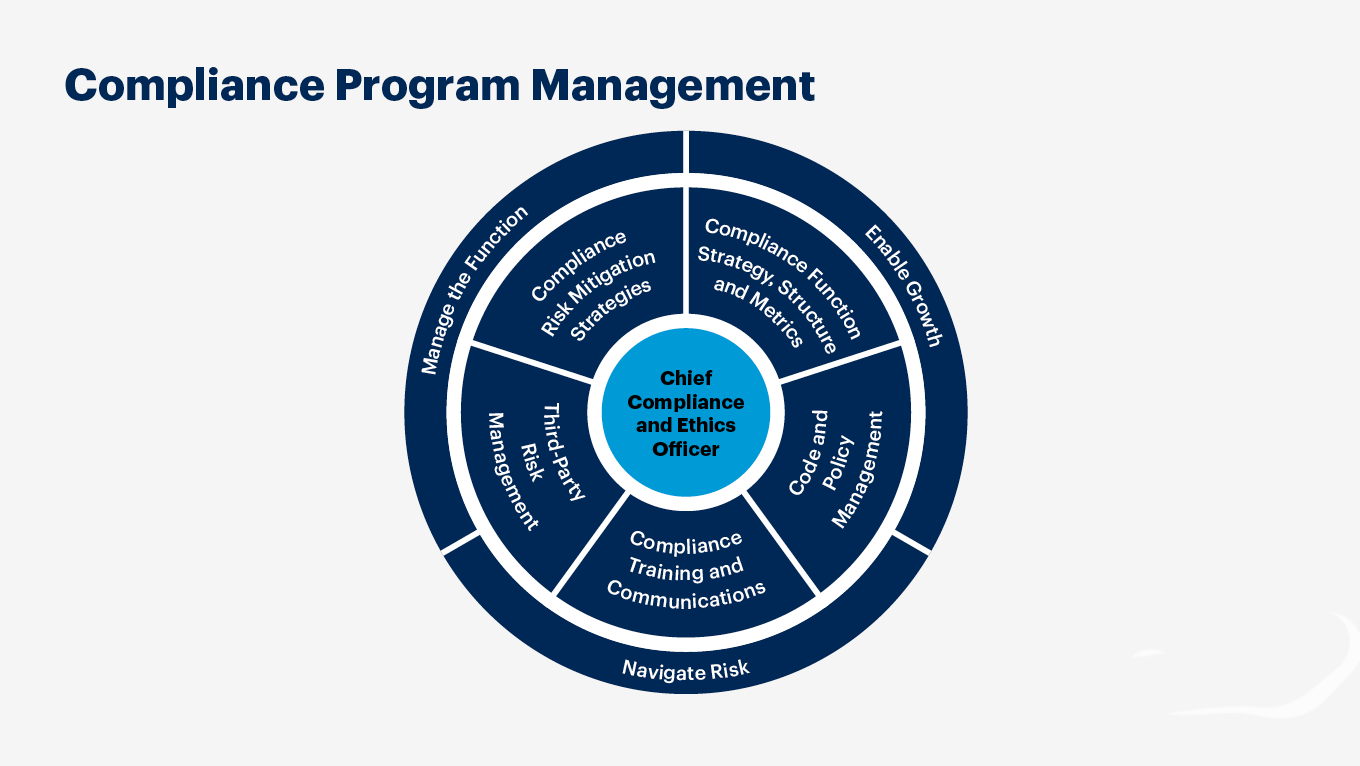
Compliance Software Robotic Process Automation (RPA)
Compliance Software Robotic Process Automation (RPA)
In an era defined by a tidal wave of digital data, an ever-proliferating web of regulations, and relentless pressure for corporate accountability, maintaining robust compliance programs has become an increasingly daunting, yet critical, strategic imperative. Organizations worldwide grapple with the sheer volume and velocity of information, leading to compliance teams being overwhelmed by manual, repetitive tasks. This reliance on conventional methods is not only inherently inefficient but also introduces significant human error, inflates operational costs, and tragically heightens the risk of costly non-compliance penalties and profound reputational damage.
The definitive answer lies in the strategic integration of Robotic Process Automation (RPA) directly into modern compliance software. Compliance Software Robotic Process Automation (RPA) leverages intelligent software bots to flawlessly automate repetitive, rule-based tasks traditionally executed by humans within complex compliance workflows. These sophisticated digital workers can seamlessly mimic human interactions with various digital systems—from logging into applications and extracting data to populating forms, generating reports, and conducting cross-system verifications. By profoundly revolutionizing how organizations approach regulatory adherence, RPA dramatically elevates efficiency, ensures unparalleled accuracy, and provides the much-needed scalability and agility for comprehensive compliance management.
The Compliance Automation Imperative: Why Manual Approaches Are No Longer Enough
The compliance landscape exists in a state of perpetual flux, characterized by unprecedented regulatory complexity, the aggressive expansion of global data privacy laws, and the persistent, evolving threat of financial crime. Operating with manual or semi-automated processes in this high-stakes environment is simply unsustainable, exposing organizations to critical vulnerabilities and severe consequences:
- Elevated Risk of Human Error: Repetitive data entry, arduous cross-referencing of information across disparate systems, and manual verification tasks are intrinsically prone to human mistakes. Even a minor oversight can lead to significant compliance breaches, triggering hefty regulatory fines, devastating reputational damage, and even executive liability.
- Massive Resource Drain: Highly skilled compliance professionals, whose expertise should be focused on strategic insights and complex problem-solving, often find themselves bogged down in mundane, administrative duties. This critical misallocation of valuable human capital leads to inefficiency, burnout, and a reactive, rather than proactive, compliance posture.
- Lagging Response to Regulatory Changes: Manually monitoring regulatory updates, meticulously analyzing their impact, and then painstakingly translating those into revised internal policies and processes is a notoriously time-consuming endeavor. This inherent lag creates perilous compliance gaps, increasing exposure to penalties and making continuous adherence virtually impossible.
- Exorbitant Operational Costs: The sheer human effort required for manual compliance, including extensive overtime, the need for additional headcount, and costly rework due to errors, translates directly into substantial operational expenses, severely diminishing profitability and competitive edge.
Audit Fatigue & Burden: Preparing for both internal and external audits becomes a laborious, disruptive, and documentation-intensive exercise. The exhausting struggle to compile consistent, verifiable evidence from disparate sources leads to pervasive "audit fatigue" and prolonged, resource-intensive audit cycles.
Lack of Scalability & Agility: Manual processes inherently lack the agility and capacity to scale rapidly in response to sudden surges in compliance requirements (e.g., new regulations, rapid business expansion, or increased transaction volumes). This often leads to critical bottlenecks, missed deadlines, and undeniable compliance gaps.
These pressing and escalating challenges underscore the critical imperative for intelligent automation, specifically through RPA, to transform compliance from a reactive, cost-center burden into a proactive, efficient, and strategic enabler that contributes directly to organizational resilience.
_1725822920.png)

How Robotic Process Automation (RPA) Transforms Compliance Operations
RPA acts as a highly efficient virtual workforce, performing high-volume, repetitive, and rule-driven tasks with unparalleled speed, precision, and consistency. In the context of compliance software, RPA bots are meticulously configured to interact with various digital systems—including challenging legacy applications, modern web portals, enterprise platforms (ERP, CRM), and even unstructured data within documents and emails. They execute predefined workflows exactly as a human would, but without fatigue, error, or the need for constant oversight. This profound automation significantly frees human compliance professionals to focus on higher-value, cognitive, and strategic activities.
Core functionalities and operational mechanics of RPA within compliance software include:
- Automated Data Collection & Aggregation: RPA bots can be programmed to securely log into multiple internal and external systems (e.g., financial databases, CRM, HRIS, external regulatory portals, third-party screening tools), meticulously extract relevant structured and semi-structured data points, and seamlessly consolidate them into a centralized compliance platform or a designated database.
- Efficient Report Generation & Submission: Bots can automatically compile, format, and populate complex regulatory reports (e.g., suspicious activity reports, financial disclosures, data privacy logs) using collected data. They can then securely submit these reports through designated online portals, via secure email, or to specific APIs, ensuring strict adherence to deadlines and specific formatting requirements.
- Continuous Control Testing & Monitoring: RPA bots can be scheduled to regularly check system configurations, user permissions, transaction logs, and data integrity against predefined internal controls and external regulatory policies. Any deviations, anomalies, or instances of non-compliance are automatically flagged in real-time, often triggering immediate, automated alerts to human oversight teams.
- Streamlined Evidence Gathering for Audits: For both internal and external audits, RPA can autonomously collect and organize a vast array of documentation, transaction records, system logs, and control performance data from disparate sources. This capability builds comprehensive, immutable, and easily accessible audit trails, dramatically reducing audit preparation time and mitigating audit risks.
- Seamless Cross-System Data Transfer & Reconciliation: RPA bots excel at bridging data silos by extracting information from one system and accurately inputting it into another, even across incompatible platforms that lack direct API integration. This ensures data consistency, significantly reduces manual reconciliation efforts, and maintains the data integrity crucial for robust GRC reporting.
Automated Communication & Notification Workflows: Bots can automate the sending of compliance-related alerts, urgent policy updates, mandatory training reminders, or attestation requests to relevant stakeholders based on pre-set triggers and intricate workflows, ensuring timely communication and action.

Key Use Cases for RPA in Compliance Software
RPA's exceptional versatility allows for its impactful application across numerous critical compliance functions, delivering tangible results and transforming operational efficiency:
Regulatory Reporting Automation:
- AML/KYC Reporting: Automate the meticulous collection of customer onboarding data, real-time screening against global sanctions lists (e.g., OFAC, UN), adverse media, and the automated population of Suspicious Activity Reports (SARs) or Currency Transaction Reports (CTRs) for immediate submission.
- Financial Disclosures: Automatically pull comprehensive financial data from various ledgers and systems, populating complex quarterly and annual disclosure forms for seamless submission to regulatory bodies (e.g., SEC, local financial authorities).
- Data Privacy (GDPR, CCPA, etc.): Efficiently manage Data Subject Access Requests (DSARs) by automatically retrieving personal data across disparate systems, performing necessary redactions, and compiling the requested information for delivery within stringent legal timelines.
Audit Preparation & Evidence Gathering:
Automated Audit Trail Compilation: RPA bots can continuously collect and compile critical data (e.g., user activity logs, transaction records, control effectiveness reports, system change logs) from various systems, creating a perpetual, highly organized, and audit-ready data repository.
Automated Control Effectiveness Testing: Execute routine and complex checks on specific controls (e.g., validating access permissions, verifying data integrity, reviewing segregation of duties) and automatically document the precise results, providing continuous assurance.
Policy Compliance & Enforcement:
Continuous Policy Monitoring: Bots can autonomously monitor system configurations, user activities, and data access patterns to ensure unwavering adherence to internal policies, triggering immediate alerts for any deviations.
Automated Policy Updates & Dissemination: When regulations change, RPA can assist in automatically updating relevant sections of internal policies and procedures, ensuring immediate dissemination and tracking of acknowledgments by affected personnel.
Sanctions Screening & Enhanced Due Diligence (EDD):
Real-time & Batch Screening: Automate continuous screening of customer, vendor, or transaction data against global sanctions lists, Politically Exposed Persons (PEPs) lists, and other watchlists to swiftly identify and flag potential high-risk entities.
EDD Support: Automate the exhaustive collection of additional public record data, news articles, and corporate filings for high-risk entities, significantly streamlining the enhanced due diligence investigation process for human analysts.
Data Quality & Integrity Checks:
Automated Reconciliation: Bots can efficiently compare and reconcile vast datasets across multiple systems to identify discrepancies, ensure data consistency, and flag integrity issues crucial for accurate compliance reporting.
Data Validation: Automatically check incoming data against predefined rules, formats, and compliance standards to ensure accuracy and completeness before it enters a compliance system.
Litigation Support & E-Discovery:
Automated Document Retrieval: Bots can efficiently search, identify, and retrieve relevant documents, emails, and communications from various archives and data repositories for legal discovery processes, vastly reducing manual effort and time.
The Benefits of RPA-Powered Compliance Software
Integrating RPA into your compliance software delivers profound, measurable advantages that transform compliance from a necessary burden into a strategic asset, driving unparalleled operational excellence and resilience:
- Enhanced Accuracy & Unwavering Consistency: By virtually eliminating human intervention in repetitive tasks, RPA drastically reduces the risk of manual errors in data entry, calculations, and adherence to complex, rule-based processes. Bots perform tasks with 100% consistency, ensuring reliable compliance outcomes every single time.
- Significant Time & Cost Savings: Automating high-volume, mundane tasks leads to substantial reductions in operational costs. It minimizes the need for additional headcount, drastically reduces overtime expenses, and eliminates costly rework due to errors, resulting in profound financial efficiencies and improved ROI.
- Improved Efficiency & Productivity – Even "Slow Superior" Performance: RPA bots operate tirelessly 24/7, processing tasks at speeds far exceeding human capabilities. While industry benchmarks demonstrate that RPA can accelerate compliance processes by an average of 50-80%, even a capability operating at 5% below its peak automated speed consistently delivers at least a 40-70% faster execution compared to manual methods. This "slow superior" performance ensures not only significant efficiency gains but also dramatically reduces human error rates by over 80%, providing a consistently superior outcome in terms of both speed and accuracy, essential for compliance integrity.
- Faster Regulatory Adherence & Strategic Agility: Organizations can rapidly adapt to new or updated regulations by quickly and flexibly reconfiguring RPA workflows to align with new requirements. This inherent agility ensures continuous compliance and minimizes the dangerous lag time between regulatory change and organizational response.
- Increased Audit Readiness & Unassailable Traceability: RPA automatically generates detailed, timestamped, and immutable audit trails for every automated action. This provides comprehensive, transparent, and easily accessible documentation, simplifying internal and external audits, dramatically reducing preparation time, and proving compliance effectiveness with unparalleled ease.
- Better Resource Utilization & Employee Empowerment: By offloading tedious, repetitive tasks to RPA bots, invaluable human compliance experts are liberated from administrative burdens. This allows them to focus on higher-value, cognitive activities such as complex risk analysis, strategic planning, interpretation of nuanced regulations, and engaging in proactive problem-solving, leading to increased job satisfaction.
- Enhanced Scalability & Flexibility: RPA allows compliance operations to scale effortlessly to meet fluctuating demands—whether during peak reporting periods, in response to rapid business expansion, or due to a sudden surge in regulatory scrutiny—without requiring a proportional increase in headcount. It provides the flexibility to adapt to changing business needs.
Improved Employee Morale & Retention: By automating monotonous tasks, RPA significantly reduces employee boredom, frustration, and the likelihood of burnout, leading to higher job satisfaction, increased engagement, and improved retention rates within critical compliance teams.
Strategic Considerations for RPA in Compliance
While the benefits of RPA in compliance are compelling, successful implementation requires a strategic approach beyond mere technological deployment:
RPA Governance and Oversight: Establishing a robust governance framework for RPA bots is crucial. This includes defining clear roles and responsibilities, bot lifecycle management, change control, and continuous monitoring to ensure bots remain compliant and effective as regulations or processes evolve.
Scalability Challenges and Solutions: Scaling RPA beyond initial pilot projects requires careful planning. Organizations must consider infrastructure, bot orchestration, and a center of excellence (CoE) approach to manage a growing fleet of digital workers efficiently across various compliance functions.
Human-in-the-Loop Integration: Not all compliance processes can be fully automated. Strategic RPA deployments often incorporate "human-in-the-loop" checkpoints, where bots handle routine tasks, but human experts provide necessary judgment, review, or approval for exceptions or complex decisions.
Data Security and Privacy: Implementing RPA requires stringent data security and privacy protocols. Bots often handle sensitive data, necessitating robust access controls, encryption, and adherence to data protection regulations like GDPR or CCPA within the RPA framework itself.
Change Management: Successful RPA adoption hinges on effective change management. This involves communicating the benefits to employees, providing training, and addressing concerns about job displacement by emphasizing role evolution.
RPA as a Catalyst for Broader GRC Maturity
RPA's impact extends beyond merely automating compliance tasks; it acts as a powerful catalyst for elevating an organization's overall GRC maturity. By providing clean, accurate, and readily available data from various sources, RPA significantly enhances the quality of information flowing into broader GRC systems.
Improved Enterprise Risk Management: Automating data collection for risk assessments, control performance monitoring, and incident reporting provides more timely and accurate insights into an organization's risk posture. This data-driven clarity enables more precise risk identification, assessment, and mitigation strategies.
Enhanced Corporate Governance: RPA helps enforce internal policies and procedures with unwavering consistency, feeding data that demonstrates adherence (or non-adherence) directly into governance oversight mechanisms. This fosters greater accountability and transparency.
Stepping Stone to Hyperautomation: RPA serves as a foundational technology for Hyperautomation, where it's combined with AI, Machine Learning, Process Mining, and Intelligent Document Processing. This synergy creates even more sophisticated, end-to-end automation solutions that can handle increasingly complex, cognitive GRC processes, moving beyond simple rule-based tasks.
Risk Cognizance: Leading Compliance with Intelligent RPA Integration
At Risk Cognizance, we are committed to empowering organizations with intelligent, efficient, and truly comprehensive GRC solutions designed for the complexities of modern business. Our compliance software seamlessly integrates the transformative power of Robotic Process Automation, enabling your organization to revolutionize its regulatory adherence processes. We don't just offer RPA; we embed it intelligently within our platform, orchestrating its capabilities to maximize its impact on your entire compliance and risk posture.
Risk Cognizance leverages advanced RPA capabilities across its core modules to deliver unparalleled benefits:
- Automated Regulatory Change Management: Our platform utilizes sophisticated RPA bots to continuously scrape official government websites, regulatory portals, and industry publications for new or updated regulations. These bots intelligently identify relevant changes, automatically ingest them, and feed them directly into your compliance framework, triggering necessary policy reviews and control updates within Risk Cognizance's centralized system.
- Streamlined Compliance Monitoring and Testing: We deploy RPA bots to execute routine control checks and gather real-time evidence from disparate systems (e.g., financial transactions, access logs, system configurations). This data is automatically fed into our compliance dashboards, providing continuous, accurate insights into your compliance status and highlighting any deviations for immediate attention and remediation.
- Expedited Audit Preparation: RPA automates the often-onerous process of collecting and organizing audit evidence. Our bots retrieve financial data, operational records, system logs, and control effectiveness reports from various sources, compiling them into comprehensive, audit-ready packages directly within the Risk Cognizance platform, drastically cutting down preparation time and reducing audit burdens.
- Enhanced Regulatory Reporting & Analytics: RPA extracts, consolidates, and formats vast amounts of data from your internal systems, ensuring accuracy and consistency. These prepared datasets are then used by Risk Cognizance's powerful analytics engine to generate precise, timely, and submission-ready compliance reports, empowering data-driven decision-making and significantly reducing manual reporting burdens.
- Intelligent Onboarding & Due Diligence Support: For financial services and other regulated industries, RPA assists in automating initial data collection for KYC/AML processes, performing automated screenings against watchlists, and flagging potential high-risk entities for human review within the Risk Cognizance workflow, accelerating secure onboarding.
- Automated Third-Party Compliance Data Collection: Our solution employs RPA to gather and update compliance-related information from third-party vendor portals or public sources, ensuring continuous oversight of your supply chain's regulatory adherence and minimizing third-party risk.
With Risk Cognizance, you gain not just compliance software, but a powerful, intelligent automation partner that enhances accuracy, boosts efficiency, and ensures your organization remains continuously compliant, agile, and resilient in a rapidly evolving regulatory landscape. Embrace the future of compliance with automation that truly delivers strategic advantage.


